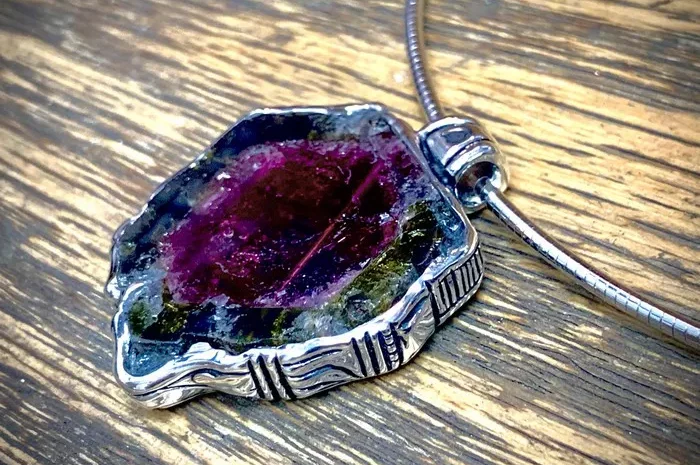Mining gemstones and minerals is a complex process that involves various factors, including geological conditions, extraction techniques, and environmental considerations. When it comes to mining black tourmaline and white marble, the challenges faced can vary greatly depending on the specific deposit and location. This article aims to provide a detailed introduction to the difficulty of mining these materials, with a focus on geological factors, mining techniques, and environmental impacts.
Overview of Black Tourmaline and White Marble
Black Tourmaline
Black tourmaline is a semi-precious gemstone known for its dark color and unique properties. It belongs to the tourmaline family, which includes a wide range of colors and compositions. Black tourmaline is primarily composed of silicon, boron, aluminum, magnesium, sodium, lithium, and trace elements such as iron, manganese, and titanium. These elements contribute to its hardness, durability, and electrical properties.
Black tourmaline occurs naturally in igneous and metamorphic rocks, particularly in pegmatites and contact metamorphic rocks. Pegmatites are large, coarse-grained igneous rocks that crystallize slowly from magma or lava, often forming large, well-formed crystals. Contact metamorphic rocks are those that have been altered by the heat and pressure from an intrusion of magma or lava.
White Marble
White marble is a type of metamorphic rock that is highly valued for its aesthetic appeal and use in construction, sculpture, and jewelry. It is composed primarily of calcite, a form of calcium carbonate, and often contains traces of other minerals such as dolomite, quartz, and clay minerals.
White marble forms through metamorphism, a process by which rocks are altered by heat, pressure, and chemical activity. It can occur in a variety of geological settings, including mountains, plateaus, and sedimentary basins. The purity of the marble’s color and texture can vary depending on the original rock composition and the metamorphic conditions.
Geological Factors Affecting Mining
Deposit Characteristics
The difficulty of mining black tourmaline and white marble is largely influenced by the characteristics of the deposits. Black tourmaline deposits are often found in remote and inaccessible areas, such as mountains and highlands. These deposits can be difficult to reach due to terrain and climate conditions.
White marble deposits, on the other hand, are more commonly found in accessible areas, such as quarries and mines. However, the quality and purity of the marble can vary greatly depending on the deposit’s location and geological history. Some deposits may contain impurities or defects that make extraction and processing more challenging.
Rock Mechanics
The mechanical properties of the rocks also play a crucial role in mining difficulty. Black tourmaline-bearing pegmatites, for example, can be highly fractured and weathered, making it difficult to extract the gemstones without causing damage.
White marble, while generally stronger and more stable than pegmatites, can still be affected by faults, fractures, and other geological structures. These structures can make it difficult to extract large, intact blocks of marble without causing cracks or breaks.
Mining Techniques and Equipment
Black Tourmaline Mining
Mining black tourmaline typically involves a combination of surface and underground mining methods. Surface mining is used when the deposit is near the surface and can be accessed using open-pit methods. Underground mining is used when the deposit is deeper and requires tunneling or shaft sinking.
In both cases, specialized equipment such as drills, excavators, and loaders are used to extract the ore. Once extracted, the ore is processed to separate the black tourmaline from other minerals and waste rock. This process can involve crushing, grinding, and screening the ore to liberate the gemstones.
White Marble Mining
White marble mining typically involves quarrying methods, where large blocks of marble are extracted from the deposit using heavy equipment such as loaders, crushers, and drills. The extracted blocks are then cut and polished to the desired shape and size for use in construction, sculpture, or jewelry.
Quarrying white marble can be a labor-intensive process, as the blocks often weigh tons and require careful handling and transportation. Additionally, the extraction process can generate significant amounts of waste rock and dust, which must be managed properly to minimize environmental impact.
Environmental Considerations
Impact on Ecosystems
Mining activities can have significant impacts on local ecosystems. Black tourmaline mining, in particular, can disrupt natural habitats and cause soil erosion, water pollution, and loss of biodiversity.
White marble mining can also have environmental impacts, including deforestation, habitat destruction, and air and water pollution. These impacts can be particularly severe in areas with sensitive ecosystems, such as wetlands, forests, and wildlife habitats.
Sustainability and Reclamation
To minimize the environmental impact of mining, many companies are adopting sustainable mining practices. These practices include minimizing waste, reducing energy consumption, and implementing reclamation programs to restore the land after mining activities have ceased.
Reclamation efforts can include revegetation, soil stabilization, and water treatment to mitigate the effects of mining on local ecosystems. By adopting these practices, mining companies can reduce their environmental footprint and contribute to the long-term sustainability of the industry.
Conclusion
In conclusion, mining black tourmaline and white marble presents a range of challenges that depend on geological factors, mining techniques, and environmental considerations. While the difficulty of mining can vary greatly depending on the specific deposit and location, it is essential to adopt sustainable practices to minimize the impact on local ecosystems and ensure the long-term sustainability of the industry.
Related topic:
- Where Is Tourmaline Naturally Found?
- What Makes Tourmaline Expensive?
- Are There Different Grades of Tourmaline?


